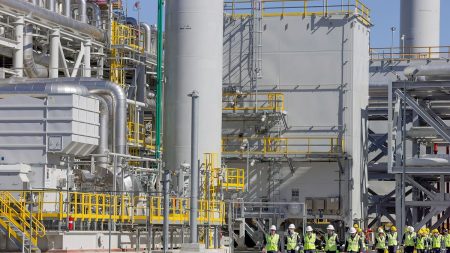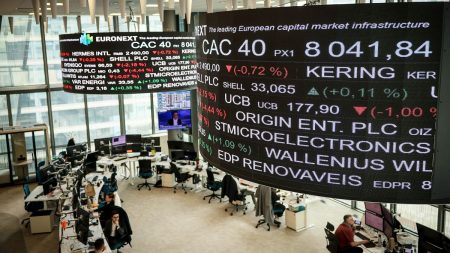Oil prices increased by nearly 1% on Thursday, reaching $72.90 a barrel, primarily due to rising tensions in the Middle East following reports from Israel of ceasefire violations by Hezbollah. The Israeli military indicated that several suspects had breached the ceasefire agreement, heightening security concerns along the fragile Israel-Lebanon border. This renewed conflict came just after a truce, established to quell a 14-month-long series of hostilities, had taken effect. The resulting uncertainty surrounding oil supply appears to have contributed to the price recovery, especially given the earlier losses seen in the oil markets over the past two days. Alongside the increase in oil prices, the euro experienced a dip of 0.2%, and European stock markets showed less enthusiasm amid the unsettling news.
In response to the evolving geopolitical landscape and fluctuating oil prices, the OPEC+ alliance has delayed its important meeting on oil production policies, rescheduling it to December 5, 2024, from the initially planned December 1, 2024. The reason for the change includes the attendance of multiple ministers at the 45th Gulf Summit in Kuwait. Analysts suggest the upcoming meeting will reveal discussions on extending current production cuts into 2024 due to persistent low prices and a lack of stability in the market. Initially, OPEC had anticipated gradual output increases should prices stabilize, but the continuation of low prices has resulted in a reevaluation of this strategy.
Goldman Sachs analysts, led by Daan Struyven, predict a stronger cohesion within the OPEC+ cartel, asserting that compliance with production cuts among member countries is on the rise. This development is seen as a positive sign, potentially benefiting countries such as Saudi Arabia, which may be more inclined to maintain reduced output levels owing to improved revenue prospects. While originally, the investment bank had forecasted production increases beginning in January 2025, they now expect this to be adjusted to April 2025, with projections indicating that Brent crude prices could hover around $76 a barrel by 2025.
The recent trends in market dynamics also reveal that crude oil and gasoline inventories in the United States are currently at five-year lows, which reinforces concerns regarding short-term supply constraints. Goldman Sachs forecasts that Brent crude prices could rise to the mid-$80s range by the first half of 2025, particularly if there’s a notable decline in Iranian oil supply resulting from stricter sanctions. This potential decrease in supply highlights the fragility of the oil market and points to how geopolitical factors can directly affect prices.
As global efforts increasingly focus on decarbonization and sustainability, Goldman Sachs anticipates that oil demand will persist and could even grow over the next decade. This growth is projected to be driven by emerging markets as well as the slow advancements in decarbonizing sectors such as air travel and petrochemical production. Thus, despite pressures to transition toward alternative energy sources, the complexities of meeting energy demands in developing economies are likely to sustain the reliance on oil in the near future.
Amid these volatile dynamics, investors remain astutely observant of both the geopolitical developments in the Middle East and any policy decisions made by OPEC+. These factors are poised to significantly influence market behaviors as we approach 2025. With such a volatile landscape shaped by both political tensions and the operational strategies of major oil-producing nations, the outlook for oil prices remains uncertain yet closely tied to geopolitical and economic indicators.














